The June 12th sale of RAINYRIDGE TALENT BARBARA EX-95 for $230,000 has me asking if she is really worth it. For years, there has been a stigma around the cows that win the big shows that they are all fake and don’t pack genetic punch. After all, we know how hard it is for a show cow to produce the next generation show winner. Using a genetics perspective, we decided to see what these show cows offer besides their good looks! (i.e. Which ones have the brains to go with the good looks.)
We looked at the All-Canadian and All-American winners and the reserve and honorable mentions and here is what we found.
All-American’s
The 2011 All-American’s average an outstanding 92 points, but more importantly, they also average over 1500 TPI points and on average have 6 generations of VG or EX dams in their pedigree.
Notable standouts include:
PINELAND GOLDWYN TIDBIT
With a TPI of 1800 Tidbit leads the way when it comes to the 2011 class. This reserve All-American Sr. 2yr old is backed by an outstanding 11 generations of VG or EX. Bred by Pineland Farms of New Gloucester ME, Tidbit is now owned by Ferme Pierre Boulet. This Goldwyn has a strong type sire stack that has shown an ability to consistently produce impressive records.
GARAY ALEXANDER DESTINY
Following close behind Tidbit is the All-American Fall Milking Yearling GARAY ALEXANDER DESTINY. Destiny is backed by five generations of VG & EX cows back to the great SNOW-N DENISES DELLIA EX-95-2E-USA GMD DOM.
RAINYRIDGE TALENT BARBARA
The HHM All-American Aged Cow in 2011 packs strong genetic punch for new owners River Valley Jerseys of Tremont, IL. Bred for strong type back to one of the greatest show cows of all time RAINYRIDGE TONY BEAUTY EX-5E-CAN 9*, Barbara already has three VG daughters. It’s no wonder that one of the greatest cattleman of this generation (Kueffner) and the type-breeding specialists (ST JACOBS ABC) took such interest in her, I am sure there are great things to come for her new owners.
All-Canadian’s
Maybe it’s the different rules for scoring 2yr olds in Canada, but the Class of 2011 averages a strong 91 points which is slightly less than their US counterparts. Similar to their US contemporaries they have an average of six generations VG or EX behind them. They average 1199 LPI points (91% Rk. For LPI.) It is worth noting that this places them in the top 10% of the population!
WILLOWHOLME GOLDWYN JESSICA
Leading the way on the Canadian side is WILLOWHOLME GOLDWYN JESSICA. The honorable mention 5 year old has an LPI of over 2000 points. This 4th generation VG or EX Goldwyn daughter has average production numbers, but gets her LPI points from high conformation and strong durability scores.
EASTSIDE LEWISDALE GOLD MISSY
The 2011 Supreme Champion from WDE and the Royal Winter Fair, has substance to her good looks. Her Outside Dam (STADACONA OUTSIDE ABEL), was a 2011 Canadian cow of the year nominee and has 100% of her daughters GP+ or better. Missy herself already has a VG-87-2yr old daughter by Dolman. Currently on an extensive flushing program, Missy’s genetic prowess is just beginning.
JACOBS GOLDWYN BRITANY
The reserve all Canadian 4yr old completes 7 generations of VG or EX. Much like Jessica, Britany gets much of her 1881 LPI points from her +17 conformation score. Bred for type, Brittany’s dam, JACOBS JASPER BEST VG-88 4*, has 100% of her nine daughters GP or better.
The Bullvine Bottom Line
At the end of the day, all dairy cows, including show cows, need to be genomically tested. While none of these show cows we have talked about will top the GLPI or GTPI list, they do have the credentials to produce the next generation of great ones.. Some will. Some won`t. So, are show cows all type and no action? Certainly not! But success is in the selection.
Not sure how much to spend on that great 2 year old?
Want to make sure you are investing your money wisely?
Download our Dairy Cow Investment Calculator.









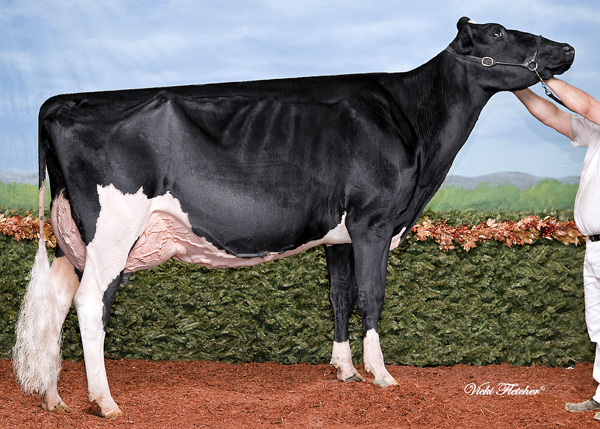
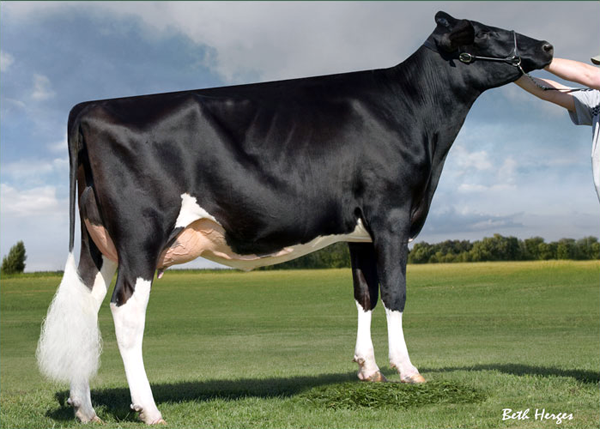
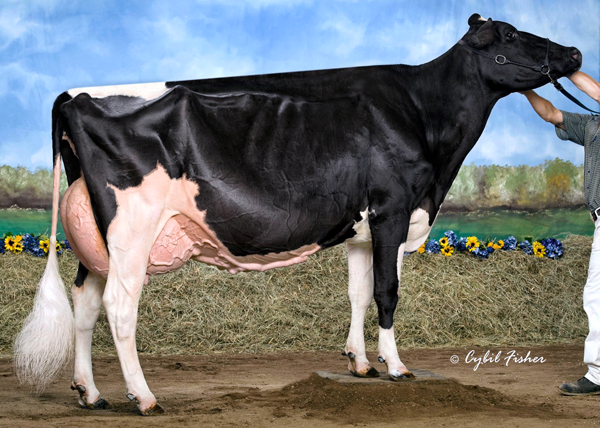
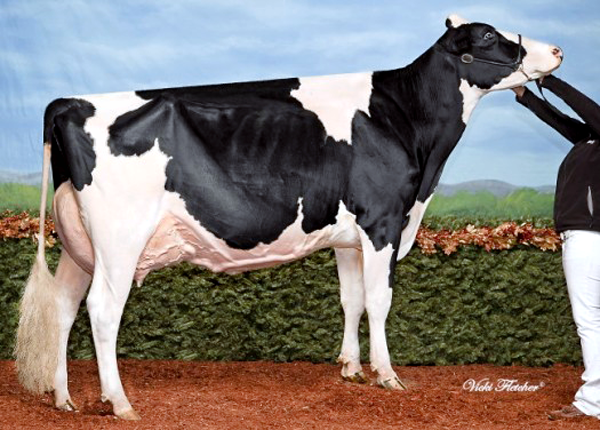
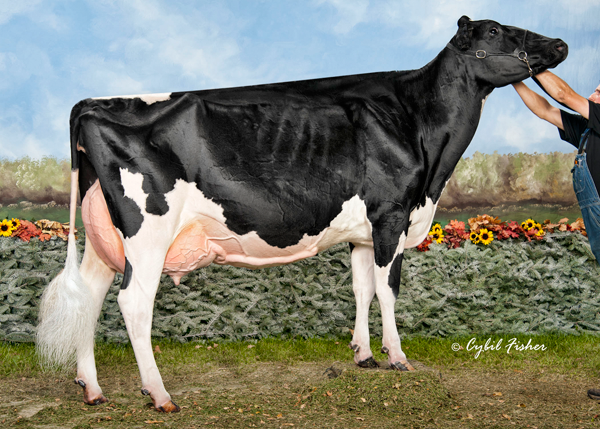
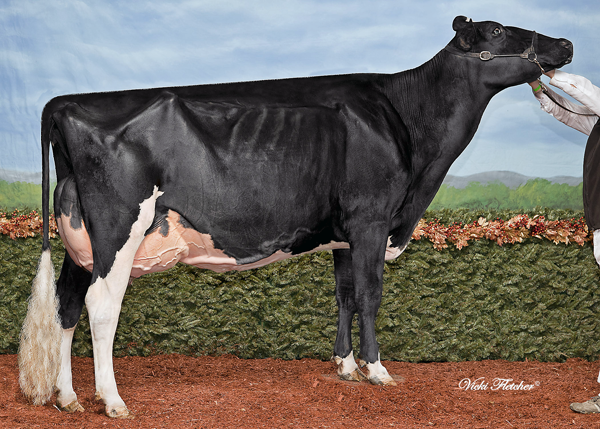


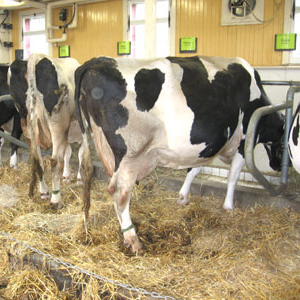 In order to get maximum results from their genetics programs, many top programs needed to have their top cattle score significantly higher than the other animals scored that same day. While many people deemed these herds “Hot Houses”, in reality they are just working the BLUP system to get maximum results. Since the calculations also took into account the genetics of the other animals scored, these “hot house” herds needed to have daughters of high type bulls that would score lower than the selected cattle that were typically sired by bulls with lesser conformation scores. For example, you have a low value cow sired by a +14 conformation sire that goes 79 points, and a high conformation cow sired by a +6 conformation sire that goes 86 points. This would provide the selected cow with the greatest difference over the expected value and have significant improvement in their EBV for conformation and thereby in their overall total merit.
In order to get maximum results from their genetics programs, many top programs needed to have their top cattle score significantly higher than the other animals scored that same day. While many people deemed these herds “Hot Houses”, in reality they are just working the BLUP system to get maximum results. Since the calculations also took into account the genetics of the other animals scored, these “hot house” herds needed to have daughters of high type bulls that would score lower than the selected cattle that were typically sired by bulls with lesser conformation scores. For example, you have a low value cow sired by a +14 conformation sire that goes 79 points, and a high conformation cow sired by a +6 conformation sire that goes 86 points. This would provide the selected cow with the greatest difference over the expected value and have significant improvement in their EBV for conformation and thereby in their overall total merit. With the introduction of genomic evaluations in August 2009, the effects that any “hot house” efforts can have has been reduced in the genetic indexing systems. This is because for young cows in first or second lactation, the relative weighting for Direct Genomic Value (DGV) compared to traditional Estimated Breeding Values (EBV) is roughly 55:45 (
With the introduction of genomic evaluations in August 2009, the effects that any “hot house” efforts can have has been reduced in the genetic indexing systems. This is because for young cows in first or second lactation, the relative weighting for Direct Genomic Value (DGV) compared to traditional Estimated Breeding Values (EBV) is roughly 55:45 (




